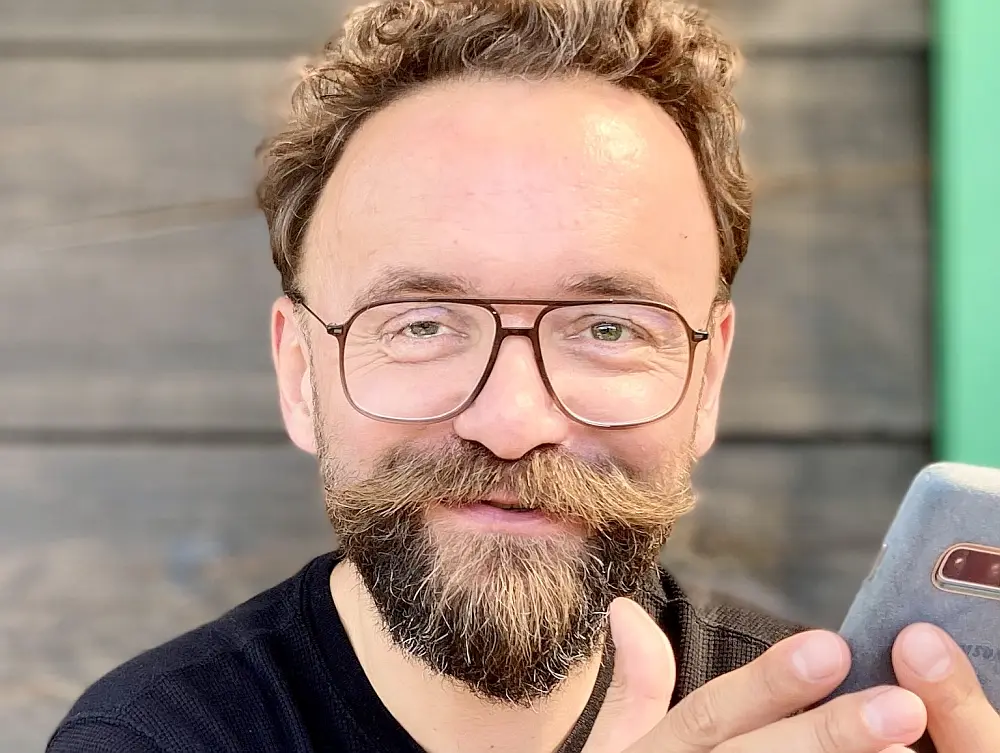 photo: Funktional agency
photo: Funktional agencyThe past years have been a time of major upheavals. What do you see as the outlook for the marketing market in Poland in this context? What threats does the current economic and geopolitical situation bring, and where is the greatest potential?
Maciej Swoboda, Chief Revenue Officer at Funktional agency: Poland, like the rest of the European Union, will - as always - be either a beneficiary or a victim of all major trends developing in the U.S. The changes we face are both a result of the pandemic (irreversible) and the aftermath of Russia’s war with Ukraine (likely also irreversible, less globally, but certainly in Poland).
This broad question can, of course, be answered in many ways, all of which would be somewhat true. I’d like to start by focusing on the fact that we live in a world of paradoxes - perhaps it was always this way, but now it’s even "more." Natalia Hatalska describes this well in her latest book “The Age of Paradoxes. Can Technology Save Us?” She has created a condensed list of the most important trends in communication and marketing. Hatalska describes our situation as a “pandemic of disinformation” (Infodemic), which is far more dangerous than the pandemic we have been experiencing in recent years. Hatalska asks, “why do we understand the concept of social distancing in the physical world and even monitor each other to stay home, while online, we don’t keep the appropriate distance from sources whose goal is to create chaos and incite panic?”
Physical distance, one might say, disappeared with the removal of masks, but fake news remains with us. People still read forums on coronavirus topics, which are now widely regarded as epicenters of unverified information.
Exactly. How significant a problem is the flood of fake news, plummeting trust in even official sources of information, and the formation of increasingly tight information bubbles for online businesses?
Today, the message is more important than the communication channels. Brands face many tests in credibility and transparency in the coming years. The era of neutrality is over. The geopolitical situation is uncertain, so today’s customer expects honesty and authenticity, especially in Poland. As a direct neighbor to Ukraine, we feel the impact of the war much more than countries further to the west. To reach the local user, we must carefully consider our advertising message. Companies should compete not only at the product level but also by tailoring their language and message to the audience.
If I asked you to name a few key trends for digital marketing over the coming years, what would they be?
For instance, a renewed interest in AR and VR technologies in the context of metaverses. Alternative worlds that Big Tech leaders want to create. In my opinion, this also stems from post-pandemic isolation. It’s a truly important trend because virtual reality and augmented reality technologies will be used not only in the gaming industry. They can be used in training, marketing, and in creating and visualizing products, and in the future, in complex service activities.
Another issue is “cookie-less.” The end of cookies is inevitable. According to Google’s current guidelines, this will be by the end of 2023. That’s soon. Companies must prepare for new realities by then.
Will some benefit while others lose out?
Those who adapt their infrastructure to the new data acquisition methods will benefit. It’s a light at the end of the tunnel for all those who focus on high-quality content. On the other hand, businesses that rely solely on third-party cookies for data on potential and current clients will suffer greatly after they’re removed.
Thus, building technological resources, such as infrastructure or human resources in IT departments or with external providers, will become essential. This will also require creating interdisciplinary teams within organizations to build dialogue between various departments that previously did not work together. Creating a data-driven organizational culture will require integrating teams such as IT, e-commerce, media, marketing, sales, after-sales support, accounting, and logistics.
Regarding content, I must add that quality will take precedence over quantity. With the growth of online advertising and the widespread use of social media for brands, it will be necessary to develop strategies carefully, focusing on capturing attention and encouraging memory.
What does it really mean that content needs to be high quality?
The key is, of course, for content to be interesting for the user, but this depends on the type of product or service. However, an important element of our activities should be an SEO strategy, meaning appropriate content management.
The Kokoliza platform points to the three most important aspects of SEO actions: user experience, content creation, and local SEO. What does this mean?
First - user experience is increasingly important for SEO results. It will become a key factor for visibility online. Second - as before, creating substantive content will remain crucial in SEO, but also varied content with appropriate keywords. Third - creating a large amount of substantive content is good, but proper linking is most effective. The internal network will become a key element of an SEO strategy. A company’s website will need to create a thoughtful tree structure to be noticed by Google. Additionally, companies will need to invest in local brand positioning, for example, by developing their Google My Business page.
* * *
Maciej Swoboda, Chief Revenue Officer at Funktional agency
He began his career in digital in 2005 as an Account Executive at Netizens Digital Innovation House, later promoted to Project Coordinator for International Markets / Account Manager. From 2011 to 2012, he worked at the agency Fortune Cookie as a Client Partner, and in 2012-2014 held a similar role at Possible. In 2014, he returned to Netizens Digital Innovation House, where he worked as Business Development Director for the next five years, followed by four years as Client Engagement Manager at Cheil Poland.
COMMERCIAL BREAK
New articles in section Marketing and PR
#POMAGAM2026 Can a New Year's resolution go viral?
wspieramy
Is a million good deeds a lot? Ten-year-old Emilka wants to find out. She just announced the I Resolve to Help campaign on the internet and urges everyone to make a unique New Year's resolution. That we help each other more often in 2026.
Dance in the media mirror. Between culture, business and viral fame
KFi
Over 78,000 media pieces, 1.6 billion potential views, and 197,500 social media mentions-dance in Poland is no longer niche. With a combined media value exceeding PLN 800 million, it now outperforms MMA, handball, and hockey.
PR in Poland. Ranking of the largest public relations agencies 2025
KFi
The smallest teams often generate the most publications, and agencies outside Warsaw are increasingly capturing media attention. This unexpected distribution of power is one of the key findings from the 2025 PR Agency Ranking in Poland, developed by Widoczni and IMM.
See articles on a similar topic:
A Socially Responsible Company. This Image Pays Off
RINF
Poles and Spaniards are the most likely in Europe to buy from socially responsible companies, according to the Global State of the Consumer Tracker report, developed in late June by Deloitte’s consulting experts.
How to reduce food waste? Packaging design matters
KFi
Researchers from China have proven that visual packaging elements and consistent messaging can be effective tools in the fight against global food waste. They published research results showing that designers and marketers can make a real difference.
Predictive Analytics in Ads. Customer Doesn’t Know Yet, But Ad Does
Krzysztof Fiedorek
Artificial intelligence is changing the rules of marketing. Predicting customer behaviors through advanced AI algorithms and making data-driven decisions is already the present. The report "The State of AI," published by McKinsey, shows the impact this will have on the advertising and marketing industry.
Rising Google Ads click costs. How to keep campaigns profitable?
Patrycja Kranc
In 2024 the average cost per click (CPC) rose in 86% of industries. In e-commerce and real estate, increases reached dozens of percent. Optimisation is becoming crucial, not only for campaigns but for the entire customer acquisition process.






























